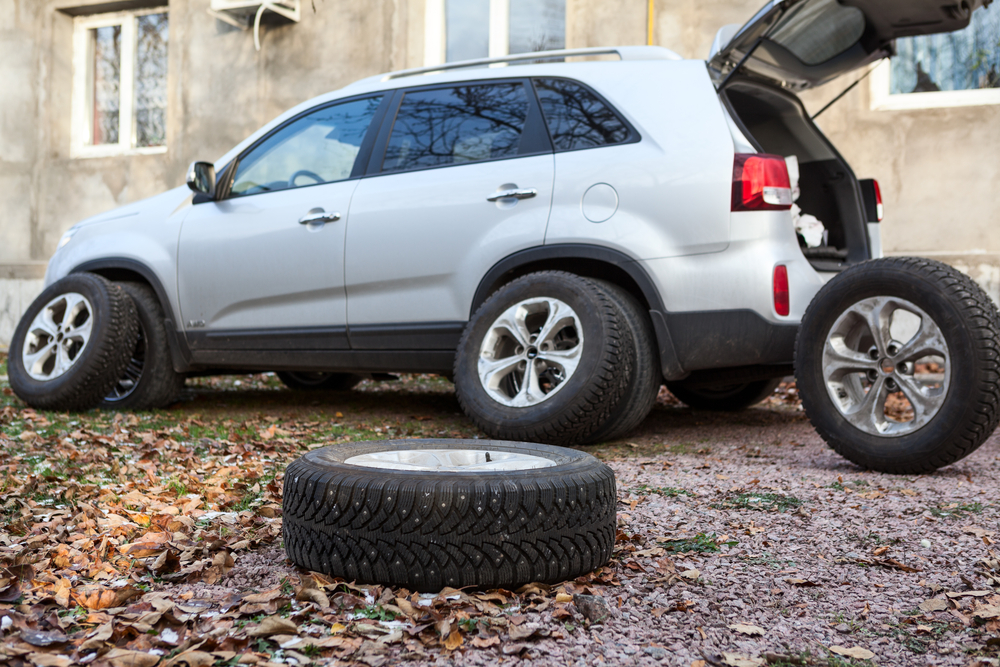 At the top of many people’s New Year’s resolutions (and at the top of many financial experts’ advice for people) is to have an emergency fund.
At the top of many people’s New Year’s resolutions (and at the top of many financial experts’ advice for people) is to have an emergency fund.
Life happens. We get sick, our pets get sick, our cars break down, we (heaven forbid) lose our jobs. An emergency fund takes some of the stress off these big expenses by giving us a cushion so our budget doesn’t get flipped on its head when something unexpected comes up.
Most experts recommend having 3-6 months’ worth of salary saved up. (This is especially helpful if you’re out of work for a while.) But I know that number can be really intimidating. Many people can barely keep up with their monthly budget, so a figure that big can make you feel like saving is so impossible it isn’t even worth starting. When The Hubby and I first got married, we decided our emergency fund was going to be $2,000. It was enough to cover most surprise expenses like medical bills or repairs without being such a huge goal we never thought we’d get there. Now it’s a bit higher than that, but having that initial lower number gave us the motivation we needed to get started.
So, what if you’re one of those people who think that saving anything on a regular basis is impossible?
It’s not, I promise! Every little bit helps, so if you can make some small change to your daily routine, they will add up over time. Here are some of the tricks we used when we were first married and things were especially tight (we still use them now):
Set up automatic deductions. We have direct deposit for our paychecks, so we set up biweekly transfers (since we’re paid biweekly) that automatically take $20 from each paycheck and move it from our checking into our saving account. Since we never really “see” the money in our checking account, we’re less tempted to spend it, and our savings slowly grows without us having to do a thing!
Treat unexpected money like free money. Whenever we get a refund, a rebate check, or any other money not planned for in our monthly budget, we put it right into savings. My grandma still gives me a birthday check every year (which is super-cute, but the way), and guess where that goes? That’s right…savings.
Put away any money you save. When we bought our flat-screen TV (our housewarming present to ourselves), we got it at a huge discount because it was the floor model and The Hubby is great at negotiating. (He loves it, actually. If anything is ever wrong on any of our bills, he can’t wait to pick up the phone and call customer service!) We’d already put aside a certain amount for the TV, so we took the money we saved and put it into savings instead.
Get a piggy bank. Whenever we have spare change at the end of the day, we put it into a cute little piggy bank I found at a thrift store. When the bank is full, I roll up the coins and take them to the bank to deposit into our savings account. It’s not a super-fast way to save, but still, it adds up!
What tricks do you have for putting aside extra money?
~Heart,
Em
—–
photo credit: Tax Credits







I trick for putting aside extra money is to not deposit the money into my account. I’m a freelance writer and when I get a check, I’ll put it aside for awhile. Normally, no more than a few weeks. Anything after that and I stand the risk of the check being voided. My reason for this practice is so I don’t even see the money in my account. After I collect several checks, I deposit it and move it into savings!
That’s exactly the same reason I set up automatic transfers to savings…if I don’t see the money, I don’t have a chance to spend it!
These are great tips and I’ve used all of them at one time or another.
I have a piggy bank on my desk at the office and while I’m collecting for charity, this idea works for savings, too. I put in my change as soon as I have any and when I find myself needing coins or dollars (for laundry, parking, tolls, etc.), I will put in more cash than I take out in change. For example, if I need $.75 I put in a $1, increasing the pot by $.25. There is currently a $20 bill in my bank that I exchanged at one point when I needed $15, upping the tally by $5!
Another tip is to give up one day dining out per week (or month) and put that money into savings. It could be something as small as a daily coffee to eating lunch or dinner at a restaurant. It not only saves money (that ideally goes directly into savings), it’s healthier, too!
And one more tip to share, when I get a raise at work I automatically increase my savings by the amount of the raise.
Thanks for sharing great tips and inspiring me to stay on track with my savings goals. Have a grateful day!
Chrysta
I love your idea for upping your piggy bank balance. I just may need to use that trick to take things “to the next level”!
I also LOVE the idea of banking any raise that you get…lifestyle inflation is a huge drain on people’s potential savings. In fact, I think you’ve just given me the topic for my next post! 🙂